
I was diagnosed with asthma before I can even remember. And almost everything sets it off: exercise, dusting the house, even cold weather. Plus, I pretty much always have a tickly cough.
Asthma is chronic inflammation of the airways that can become either milder or more severe over time. Asthma symptoms include shortness of breath, wheezing, persistent coughing, and chest tightness. Asthma can greatly limit your airflow, causing you not only to breathe erratically but also to panic.
I’ve never had a serious asthma attack because I carry my inhaler literally everywhere with me. But I’ve had some scary close calls.
There are tons of resources online on how to diagnose and soothe asthma, but it can be difficult to work out the difference between chronic asthma and symptoms of other respiratory conditions.
If you suspect you or a family member has asthma, pay close attention to the main symptoms. Because the more easily you and your doctor can recognize your condition, the easier it is to treat.
How Many People Have Asthma?

According to the World Health Organization (WHO), 235 million people in the world suffer from asthma. It's also the most common chronic illness among children. Yet somehow it still goes underdiagnosed.
In America alone, 25 million people have the disorder, 7 million being children, reports the National Heart, Lung, and Blood Institute.
Who Is Susceptible to Asthma?
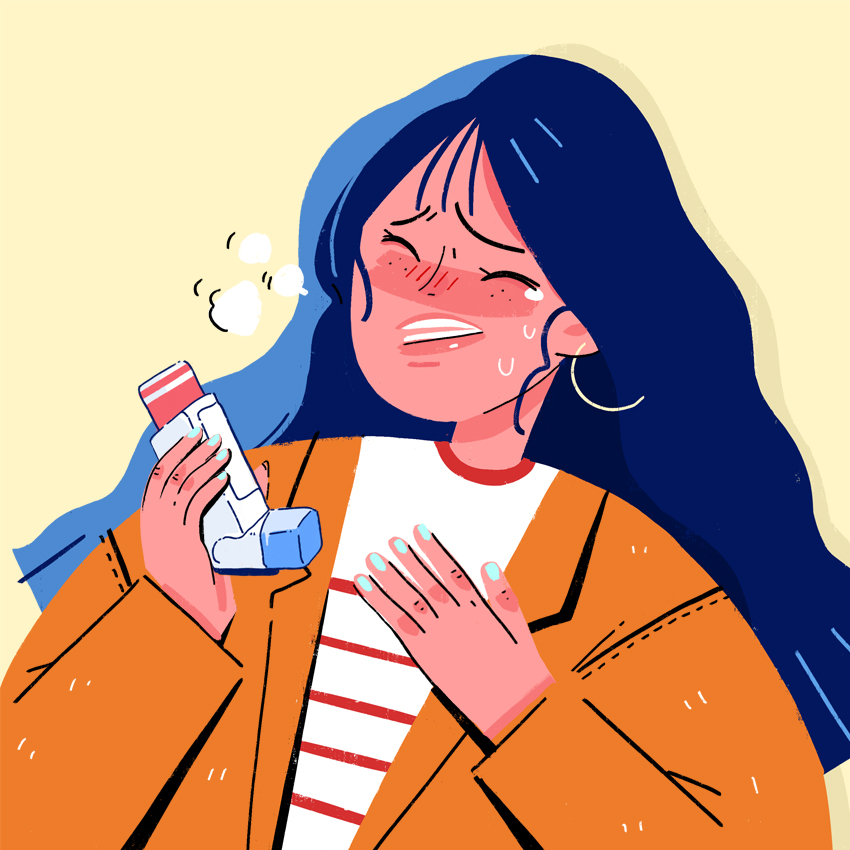
Young children are statistically more at risk of developing the disorder than adults are. If you’re in your 20s and haven't developed asthma yet, then you're probably in the clear. Kids, on the other hand, are likely to have it for life if they begin to show symptoms early.
Elderly folks, and those who get chronic respiratory infections and allergies, are also likely to develop the disorder. Eczema often comes hand in hand with the disorder. So if you have one condition and are unsure about the other, be sure to visit your doctor.
Asthma can also affect certain racial and ethnic groups more than others. Those in African American and Puerto Rican communities in particular are at a higher risk of the disorder. Also, a whopping 80 percent of asthma-related deaths occur most in low- and lower-middle-income areas.
Types of Asthma and Attacks

There are two main types of asthma: allergic (extrinsic) and nonallergic (intrinsic). Extrinsic asthma is more commonly related to allergies (rhinitis, hay fever) and develops in childhood. Intrinsic asthma is less common and develops after the age of 30, resulting from respiratory issues rather than allergens.
When Are You Likely to Have a Reaction?
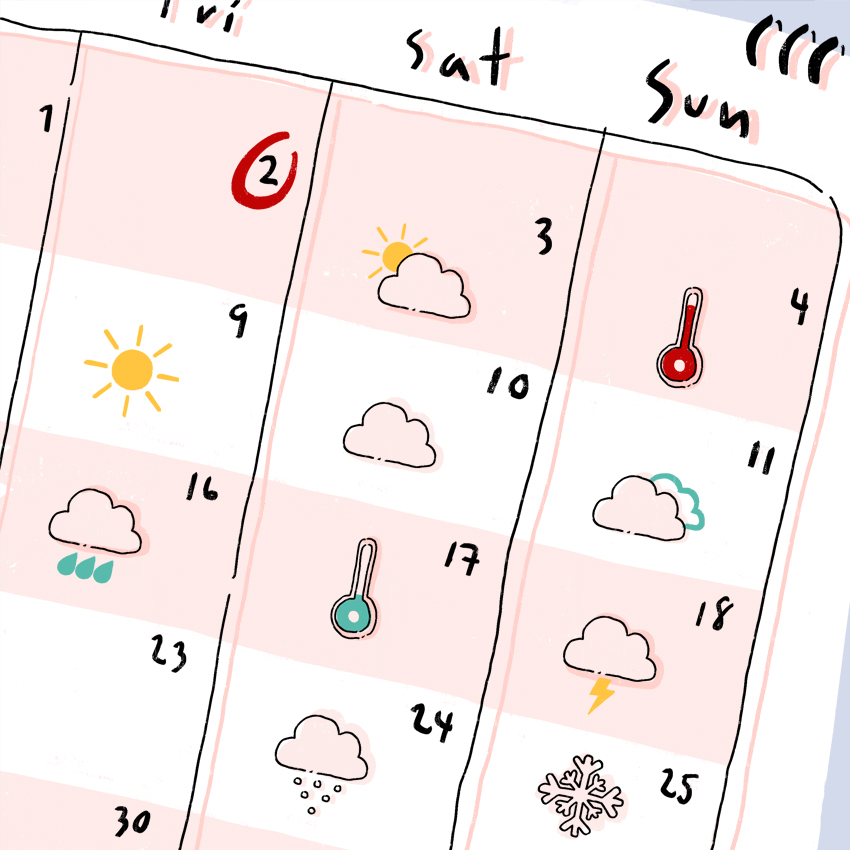
If you have asthma, there are certain times of the year that make you more susceptible to the symptoms. Winter and spring tend to be the worst. During springtime, you have to deal with hay fever, dry heat, humidity, and other factors that can irritate the lungs. It’s also a common time for people to go on vacation and deal with climates their lungs aren’t used to.
The biggest problem with winter, of course, is the cold, which restricts the lungs by contracting the muscles. Winter's dry air can also irritate the airways.
Both seasons also bring an increase in the cold virus. The flu is also most common during the winter. Both illnesses bring extra coughing, blocked airways, and other symptoms that can exacerbate asthma.
Asthma Symptoms 1. Shortness of Breath

This is probably the most well-known symptom of asthma, and one of the easiest to spot. Though there are many reasons you might be short of breath, in asthma it’s very persistent. Having difficulty breathing in “enough" air is something every asthma sufferer will experience at some point in life.
Whether you have an inhaler or not, try to slow your breathing as much as physically possible, as this will help you take in the oxygen you need. It’ll also help you avoid going into shock or panic attack mode.
2. Chest Tightness

Having a tight chest is a frightening thing, and it often sends people into panic mode. Salbutamol inhalers are anti-inflammatory, which is why the tightness fades after taking a couple of puffs. So taking your inhaler ASAP will decrease chest tightness.
You’ll usually feel the tightness around the rib area, which is where your lungs are.
3. Wheezing
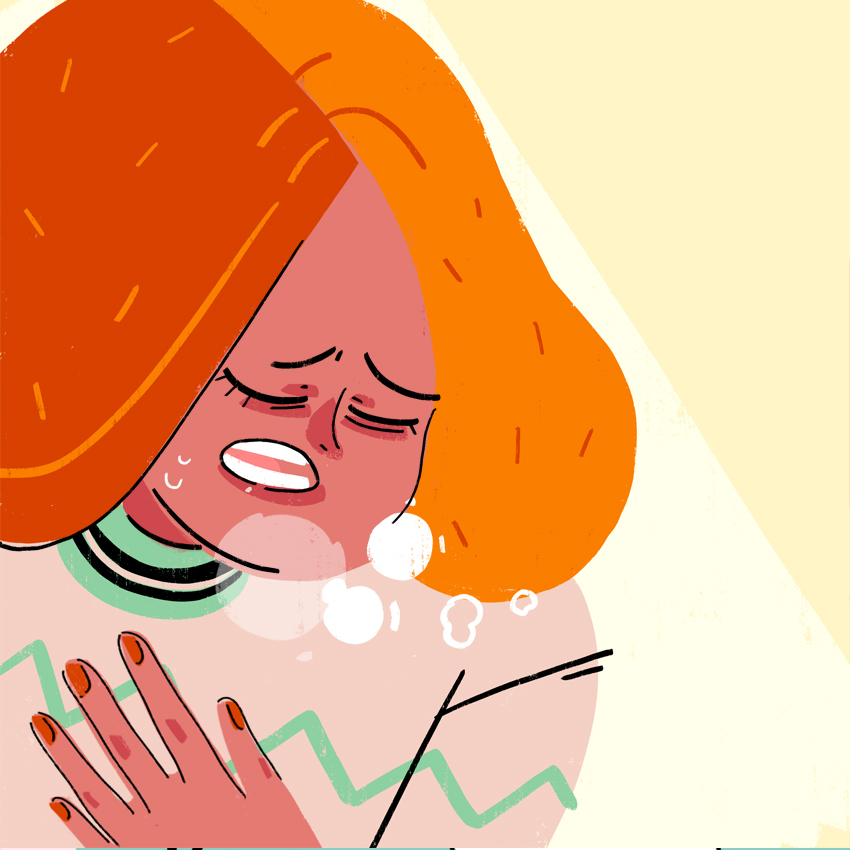
The difference between naturally being out of breath from running or laughing and being out of breath due to an asthma attack is the sound asthma causes when you wheeze. Oftentimes, you’ll hear different “harmonies” in your wheezing, like two or more different sounds are escaping your lungs. Usually a low-pitched drag of air is paired with a high-pitched squeaking.
Because text can never fully do this description justice, here’s an audio clip of what to listen for.
If the wheeze doesn’t go away within 30 seconds or so, you’ll need your inhaler.
4. Fatigue
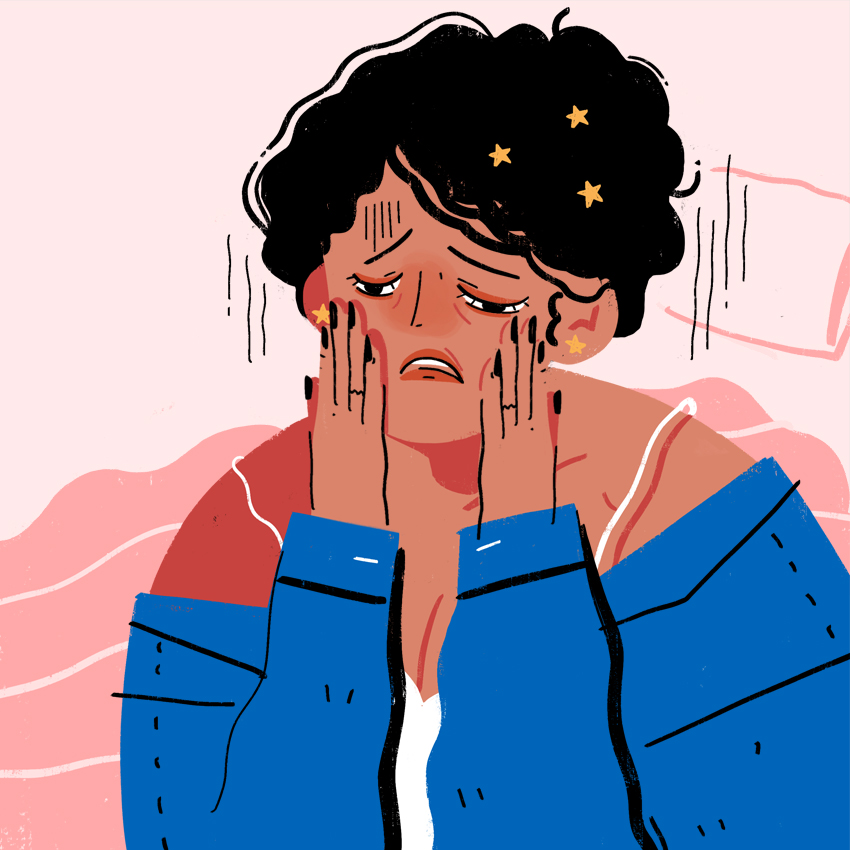
Ah, fatigue — the most vague and common symptom of literally every disorder known to man. Just like a persistent cough, fatigue can also be a symptom of asthma. Having limited oxygen for even a short amount of time is always going to dissipate your energy level.
Though a drag of your inhaler won’t wake you up, you can still combat asthma-based fatigue by taking multivitamins, drinking water, and eating a balanced diet.
5. Persistent Cough
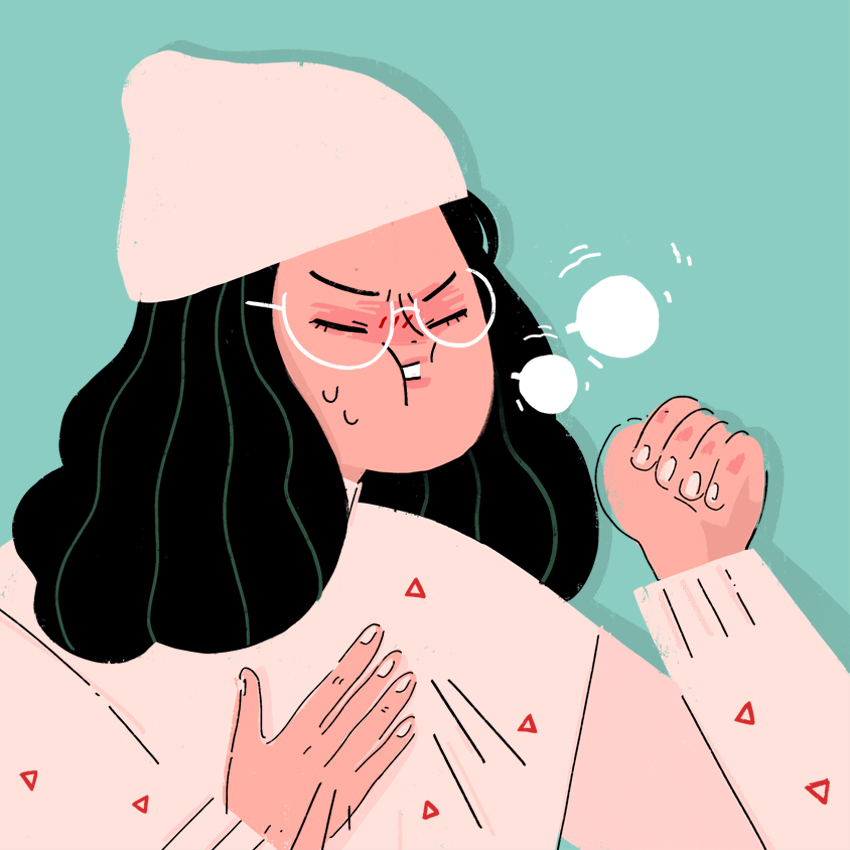
The key terms when trying to diagnose asthma symptoms are “persistent” and “consistent.”
Having an occasional cough might not mean much, but if you constantly have a cough (even when you don’t have allergies or a cold), it could be asthma.
If the cough gets irritating, don’t suffer in silence. Take a puff of your inhaler and drink a glass of water.
6. Difficulty Exercising

Exercise-induced asthma can making working out very difficult. It limits how long you can run or cycle, and it makes you unsure of how much you can safely push yourself.
Be sure to know your limits with each workout. If you feel like you’d like to do an extra 10 minutes on the treadmill, but your chest is beginning to get tight, take a break. Always have a bottle of water and your inhaler on hand, and make sure you can stop whatever you’re doing very quickly if need be.
7. Torso Pain
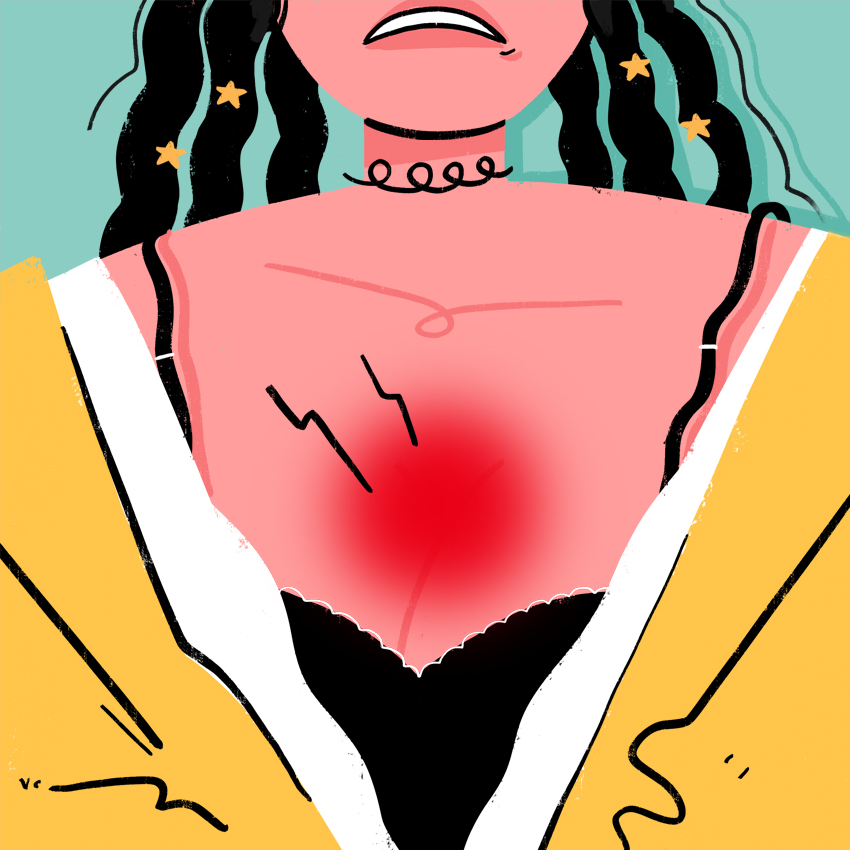
Asthma can make your entire torso hurt. The disorder can put a lot of strain on your body, so it can make your upper body feel stiff.
It’s not just the chest, either. You can also strain your back during coughing fits. So be sure to stock up on heating pads, ice packs, and painkillers.
8. Random Choking Fits

On top of random coughing fits here and there, full-on choking fits are also a nasty symptom.
Sometimes the choking fits come after swallowing something the wrong way, and for the average person this choking will calm itself after a moment or two (unless it becomes lodged). But for asthmatics, it can last way longer and lead to an attack.
Sometimes, however, the choking fits aren't triggered by anything at all. You might wake up at 2 a.m. choking so hard that it's nearly impossible to catch your breath until you grab your inhaler.
Triggers
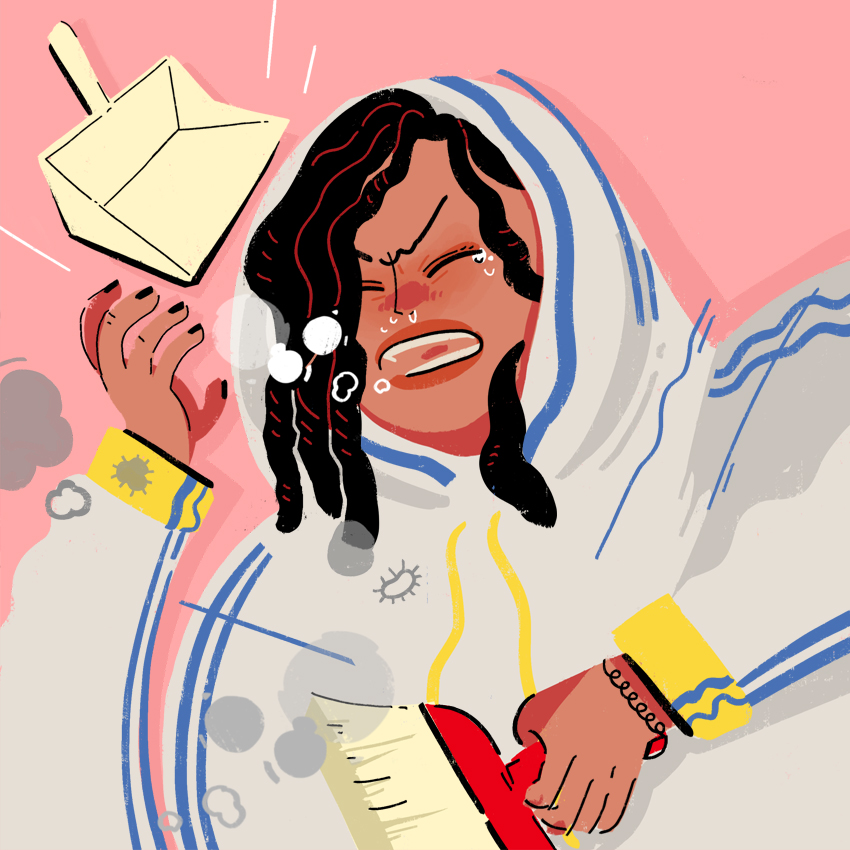
Rhinitis and asthma go hand in hand, just like eczema and asthma do. If you’ve ever had a bad wheezing session after dusting out an old room, then you might have asthma. Breathing in any kind of irritable powder can lead to an inflammation of the airways.
Latex powder, dust, icing sugar, and even powder foundation can act as triggers for asthma. When the powder is stuck in your lungs, all it can do is rub up against your airway and block it. Because dust is pretty unclean, it's one of the worst asthma triggers. It’s also filled with tiny mites that leave droppings, which can cause even more inflammation.
What to Do During an Asthma Attack
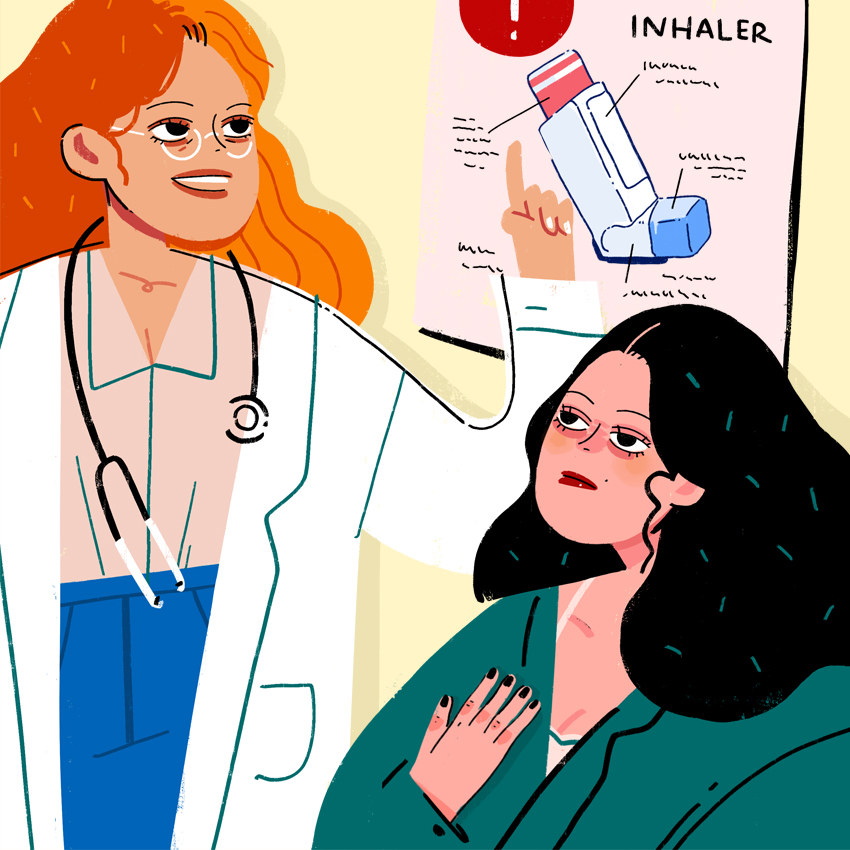
As with many chronic illnesses, most of what you can do to fight the condition is to prepare for it before it hits. Seeing your doctor about what to do and how to medicate the condition is the first step.
In terms of knowing what to do during an attack, here’s a quick run-down:
- If the attack has been triggered by something specific (e.g., an allergen), get away from it ASAP.
- If possible, get the attention of someone who can help.
- Sit upright, as this will help air circulate in your lungs more easily.
- Take long, slow, steady breaths.
- Take one or two deep breaths of your inhaler, and wait at least one minute to see if the attack is calming down before taking another puff. Your doctor will help you decide just how many doses are correct for you, but usually the maximum number of puffs per day is eight to 10.
- Continue to breathe as calmly as possible. Call an ambulance or a cab to the hospital if symptoms continue.
If your attack has successfully faded with medication and time, then the next step is to relax and soothe yourself. Basically, just take it easy for a few days.
Booking an asthma review with your doctor or nurse soon after will also help.
Not every asthma reaction is a full-blown attack, but reactions still need to be medicated. If you haven’t spoken to your doctor about managing attacks, then heading to your local hospital during a reaction or attack is vital.
Above all else, the No. 1 thing to do during an asthma attack is to stay calm. That’s way easier said than done, I know, but it’s worth practicing in advance.
Think about what you could focus on during your next possible attack, plan out what will soothe you, and practice taking deep, slow breaths.
Asthma is a serious condition, but it's easily treated. Either way, get medical help and just tell yourself that you will be OK.
For more information on asthma, check out the Asthma and Allergy Foundation of America, the Environmental Protection Agency, and the Global Asthma Network.




